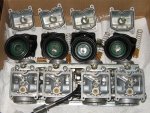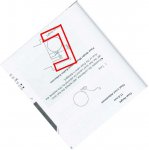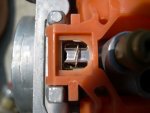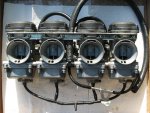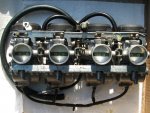Here's what all the recent carb cleaning practice and parts collecting was leading up to. I'm attempting to rebuild a set of Keihin CVK 36mm carbs that were taken off a 1986 ZX1000 Ninja. If successful, these will eventually be installed on my bike. Yes, I'm batty.
It's always a gamble when buying used parts online. At first glance the exterior is fairly clean. The diaphragm slides seem to be working fine. I noticed when I opened and closed the butterflies, they seem a little sticky as they close. Choke slider seems half stuck. Good lord, the bowl screws are a mess. Half of the heads are stripped and the screws are different lengths with 6 of them being hex heads. I get the feeling this set of carbs will be a lot of work.
It's always a gamble when buying used parts online. At first glance the exterior is fairly clean. The diaphragm slides seem to be working fine. I noticed when I opened and closed the butterflies, they seem a little sticky as they close. Choke slider seems half stuck. Good lord, the bowl screws are a mess. Half of the heads are stripped and the screws are different lengths with 6 of them being hex heads. I get the feeling this set of carbs will be a lot of work.



